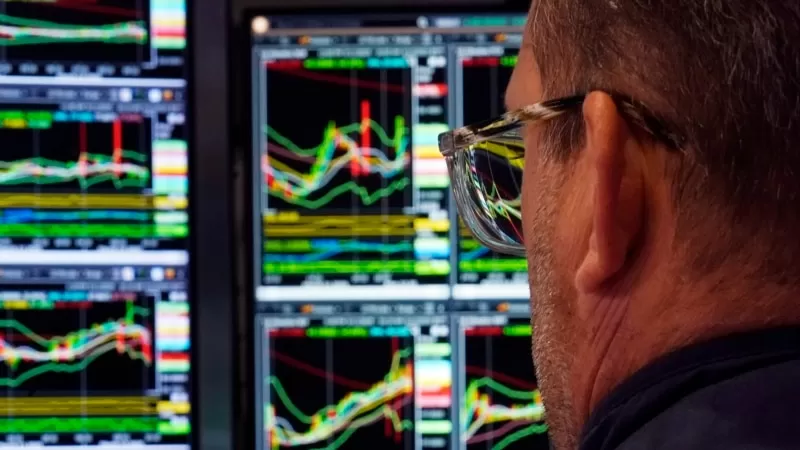NEW YORK – The stock market has been on a rollercoaster ride this week as Wall Street’s sell-off hit a new low on Thursday. The S&P 500 fell more than 10% below its record high, which was set just last month, causing many investors to worry about the future of the market.
A 10% drop is considered a correction by professional investors, and the S&P 500’s 1.4% slide on Thursday sent the index to its lowest point since 2023. This sharp decline came after U.S. President Donald Trump’s announcement of imposing higher tariffs on European wines and alcohol as part of his escalating trade war. Despite some positive news on the U.S. economy, the market continued to spiral downwards.
The Dow Jones Industrial Average dropped 537 points, or 1.3%, on Thursday, while the Nasdaq composite fell 2%. The market has been experiencing extreme volatility, with stocks fluctuating not just day to day, but even hour to hour. The Dow swung between a slight gain and a drop of 689 points during Thursday’s trading, leaving many investors feeling uneasy and uncertain about the future.
This uncertainty is a direct result of the trade war and the unpredictability of Trump’s policies. The president’s goal of reshaping the country and the world has led to increased tariffs and other measures that have caused chaos in the market. Trump’s latest move to threaten 200% tariffs on European wines and other products in response to the European Union’s tariffs on U.S. whiskey has only added to the confusion and fear among investors.
The constant changes and threats of tariffs have not only affected the stock market, but also the confidence of U.S. households and businesses. The uncertainty about which tariffs will be implemented and when has caused a decrease in spending, which could have a negative impact on the economy. Some businesses have already started to see changes in their customers’ behavior due to the uncertainty, which could lead to a slowdown in economic growth.
One of the biggest concerns for the economy is the possibility of stagflation – a scenario where economic growth stagnates but inflation remains high due to tariffs. This is a challenging situation for policymakers, as there are limited tools available to address it.
Amidst all this uncertainty, there was some good news on Thursday. Reports showed that inflation at the wholesale level last month was lower than expected, and U.S. consumers are also feeling less pressure from inflation. Additionally, there was a decrease in the number of people applying for unemployment benefits, indicating a relatively solid job market. If this trend continues, it could help boost consumer spending, which is a key driver of the economy.
Despite the recent market turmoil, it’s important to remember that the U.S. economy is still in a strong position. The recent drop in stocks may cause concern, but it’s important to keep in mind that the market has experienced corrections in the past and has always bounced back. The fundamentals of the U.S. economy remain solid, and with the positive economic reports, there is hope for a rebound in the market.
In conclusion, while the recent stock market decline has caused anxiety among investors, it’s important to remain optimistic and focus on the strong foundation of the U.S. economy. With the right policies and a continued focus on economic growth, the market has the potential to recover and continue on its upward trajectory. As always, it’s crucial to stay informed and make wise investment decisions, but there is no reason to panic. Let us have faith in the strength and resilience of the U.S. economy.

